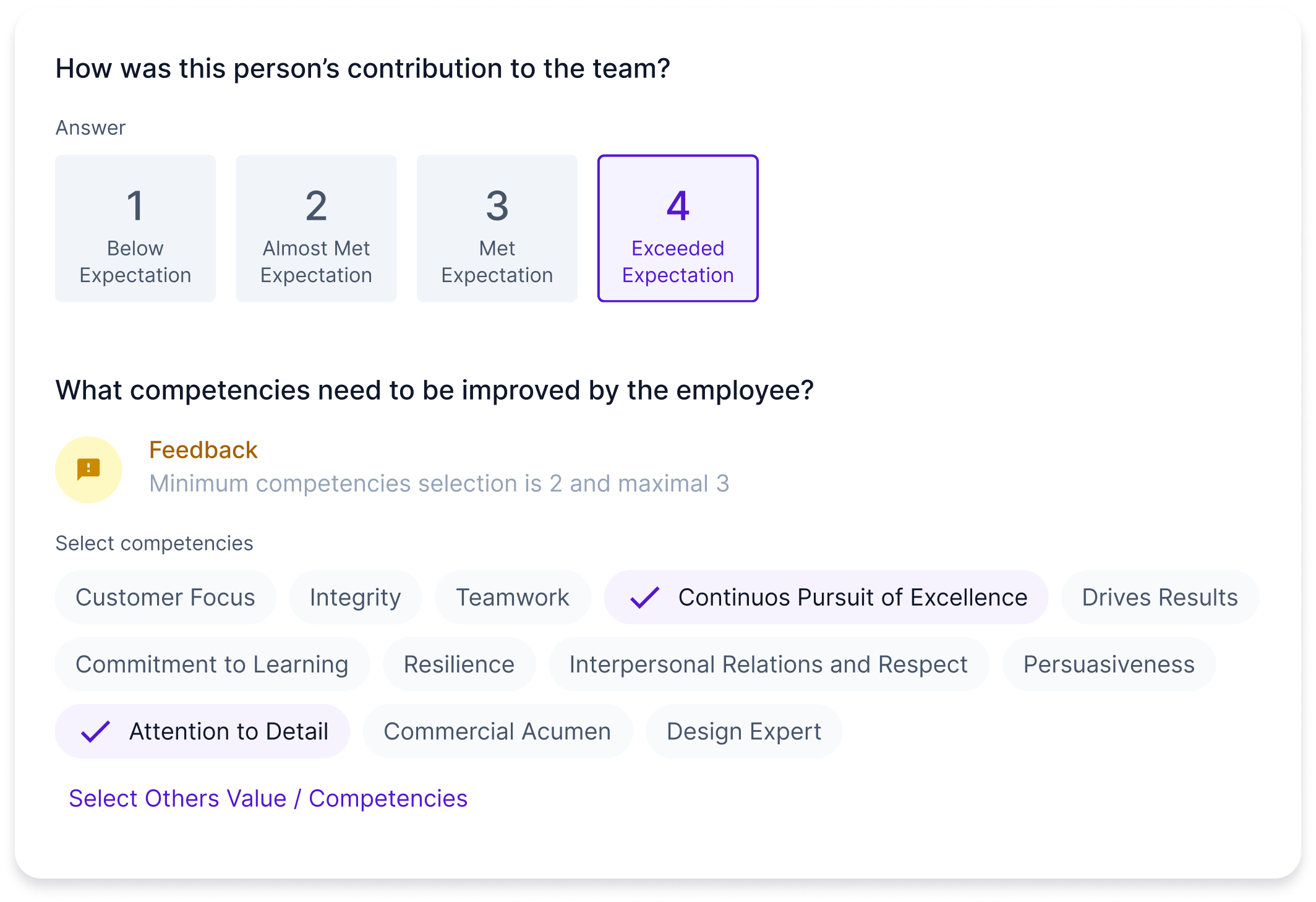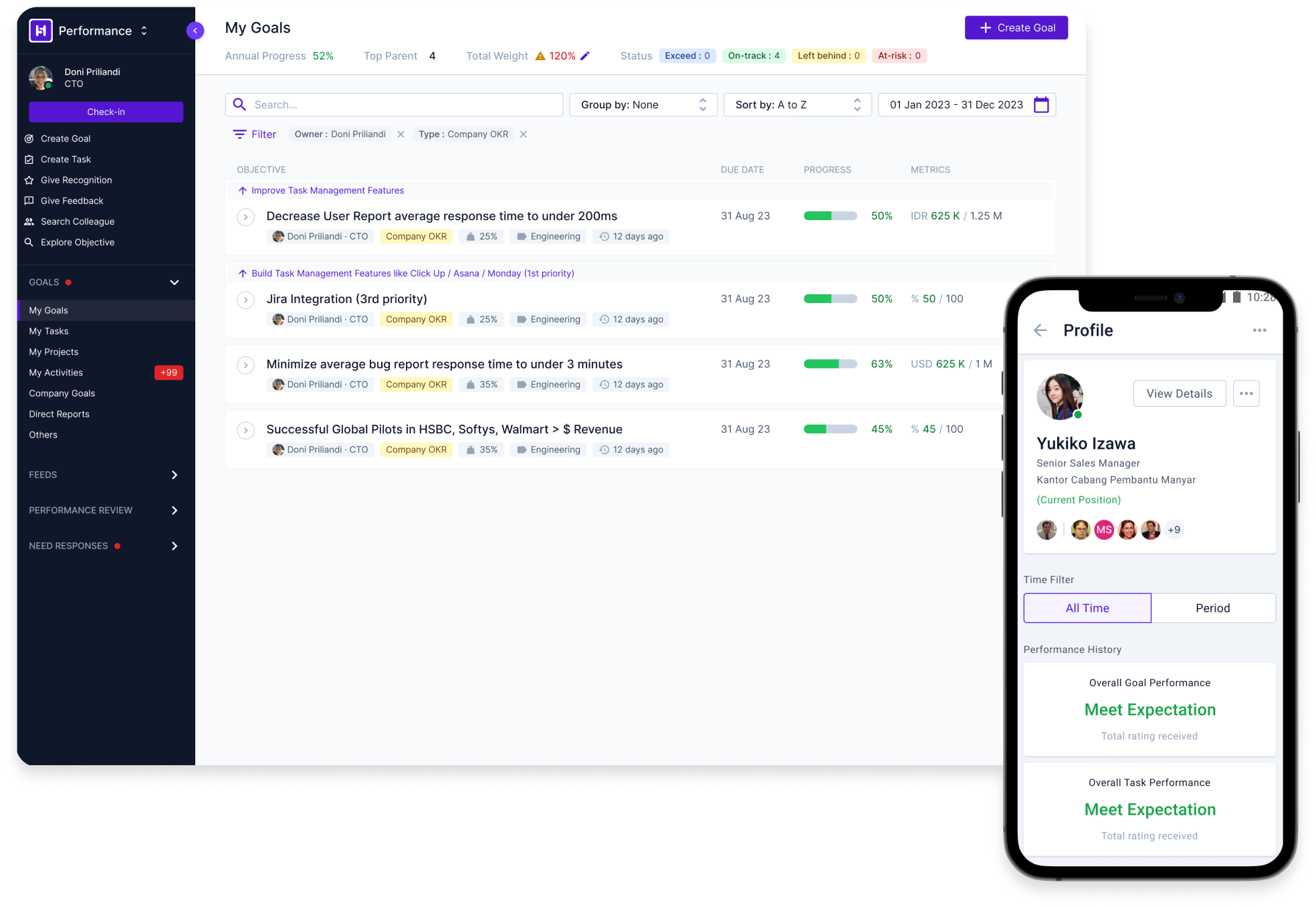

The performance review platform
that allows HR managers to do more
Happy5’s employee performance evaluation tool allows managers to get complete visibility
of their team members’ contributions, skill sets, and competencies.
Build deep employee behavioral profiles
Customize assessment frameworks based on skills, competencies, values, etc.
Align impact to performance
Align performance to actual achievements around tasks, projects, and goals.
Collaborate on reviews fairly
Add multiple layers of performance calibrations to ensure fairness.
Conduct thorough employee assessments
Customize assessment templates for your reviews: from assessment cycles and manager responsibilities, to weightage contribution and scoring calculation rules. Happy5 allows HR managers to set things how they want it.

Ensure reviews are conducted fairly
Set responsibilities for who does (and receives) reviews; configure what happens when an employee switches roles mid-cycle; and track multi-calibrations to ensure everyone is assessed fairly and efficiently.

Identify top performers and those that need help
Easily compare employee scores side-by-side in a matrix visualizer, broken down by skill, competencies, values and goal performance, so you can easily identify top performers and those that need help.

Integrating the 5 pillars of
performance management
OKRs & Goals
Project Management
Performance Reviews
Growth & Engagement
Customization
Develop your organization’s talent and drive performance

Make Happy5 look and feel like your organization’s brand

Customize all text/labels within the platform and have your own branded URL and login page design specific to your company. You can also customize a branded mobile app store experience for your employees.






